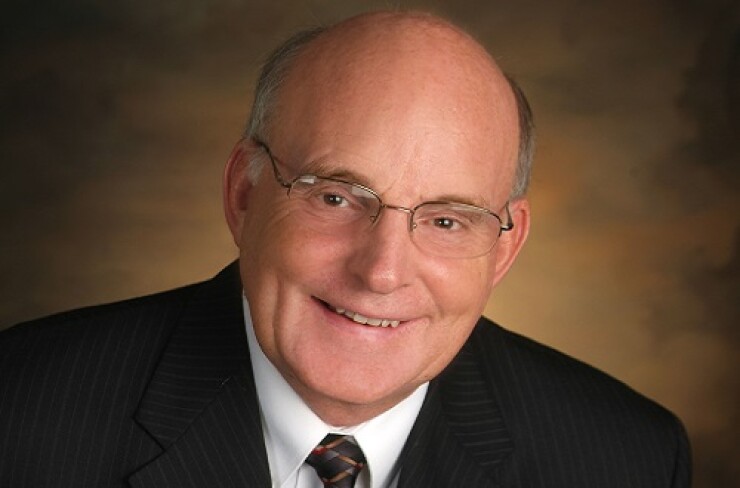
Behavioral finance has gained popularity in the industry as a method of understanding and guiding investor behavior, but one expert says its principles can be applied to measure the work of fund managers as well.
Research into understanding the human element of investment decisions exposes a flaw that, according to
In a discussion with Money Management Executive, Howard, a behavioral finance authority, singles out the modern large scale of funds - driven by executive demand - as posing real problems for active management and argues for a limit on funds that designate themselves as active managers.
Consider the fund executive. Could you apply a behavioral finance framework to measure the performance of the manager that's working for him?
The problem isn't the analyst. The problem is the executive. If you think about the fund complex, it's got the buy-side analyst, and they go out, do their analysis, bring as much data to bear, and then make a recommendation about a stock. So you've got these core analysts, and it turns out they're really good at what they do. If you consistently invest in their best ideas, over an extended period of time you'll outperform an index, and our research shows by about 500 basis points.
More than likely, they are identifying behavioral price distortions in many different ways. Some go out and talk to a company and figure out what they are doing, others are following announcements. Each analyst team has a different way of going at it. About 90% of them generate alpha, more than enough to cover their management fees. So why is it on average they underperform? This unfortunately is where the executives come in.
We talk about strategy, consistency and conviction. Those are the behavioral keys. If you're talking to executives, it's the behavior of your portfolio managers and of your analysts that are the source of superior returns. A narrowly defined strategy, consistently pursued, taking high conviction positions. The problem is now I put this into a fund complex, and it has non-performance incentives. We make the mistake of rewarding funds on AUM. So what are they going to do? They're going to get big. Now, every manager has a set of stocks. What happens is that you get large, and that pool of stocks becomes increasingly difficult to implement because of trading considerations. And once the fund reaches a billion dollars - and this is based on a lot of research - excess returns virtually disappear. So think about all the funds out there that are over a billion dollars. Our research says there's very few of them that can do well.
So you're suggesting these asset management firms should scale back?
Absolutely. You have a core competency. If the fund gets big, it's forcing managers out of their core competency. There's 3,000 stocks you could probably trade, and if you're small enough, maybe 5,000 stocks. But really this group that you could trade is 10 to 15. Once the fund gets big, you can't do that anymore. You can't identify those stocks, you're constantly going out and buying second- and third- and fourth-best stocks. We develop skills, we identify a set of stocks - every manager does this. Once you get to a billion dollars, you can't do that anymore.
That sort of limitation wouldn't be considered practical by the industry.
Let's change the rules. Once you hit $1 billion, you have to convert to an index fund. And if you don't want to do that, stay smaller. If you think about the world of active management, down here is Jack Bogle and indexing. Up here is truly active managing. We don't have a spokesperson. Can active managers earn superior returns? Absolutely. Can they get big and do that? No. They can't.
So if you're going to call yourself active, you need to reside up here. And that's the problem. These executives want to get big. And that's how they get paid. But if you really want to deliver alpha to investors, you have to stay truly active.
What sort of change then is needed?
The problem is that 70% of the funds we run into are closet indexers. They do not deliver value to their customers. But they've managed to get big and survive, and actually because they have so much money, they've captured markets like the 401(k) markets. So how do you unwind that? What they're doing is wrong. It's the classic, are you a commodity, which is the indexing, or do you specialize? We've got this terrible model where you can call yourself an active manager, but deliver an index and underperform. So size is one thing.
The second thing is tracking an index. We've got this terrible distribution system, because we stick everyone in a stylebox. The stylebox impedes my ability to execute my strategy. I've got this set of stocks - where those stocks move in the equity universe is not what I am focusing on. I'm focusing on the set of stocks that I can pick that will earn excess returns. Don't tell me to stay in the stylebox. I'm a baker, keep me with bread. It seems to make all the sense in retail, but in the investment management world, it is deadly.
The third thing is low conviction positions. As far as we can tell, you actually have faith in 10 to 15 stocks. Ask a manager, if you weren't working for this big complex, and you were building your own portfolio, how many stocks would you invest in? So why do you hold a hundred stocks in your mutual fund?





